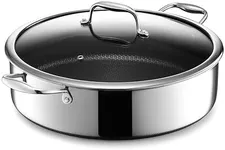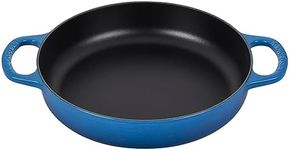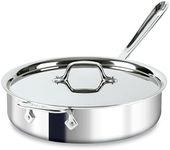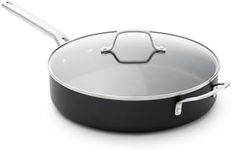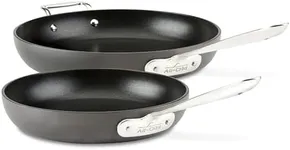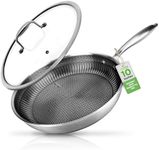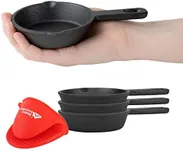Buying Guide for the Best Chicken Fryer Pan
Choosing the right chicken fryer pan can make a significant difference in your cooking experience and the quality of your fried chicken. The right pan will ensure even cooking, proper heat distribution, and ease of use. When selecting a chicken fryer pan, consider the following key specifications to find the best fit for your needs.MaterialThe material of the pan affects heat distribution, durability, and maintenance. Common materials include cast iron, stainless steel, and non-stick coatings. Cast iron retains heat well and provides even cooking but requires seasoning and can be heavy. Stainless steel is durable and easy to clean but may not distribute heat as evenly. Non-stick pans are easy to clean and require less oil, but the coating can wear off over time. Choose a material based on your cooking habits and maintenance preferences.
SizeThe size of the pan determines how much chicken you can fry at once. Pans typically range from 10 to 14 inches in diameter. A larger pan allows you to cook more pieces simultaneously, which is ideal for families or entertaining guests. However, larger pans require more storage space and can be heavier. Consider the number of people you usually cook for and your kitchen storage when selecting the size.
DepthThe depth of the pan affects how much oil you can use and how well the chicken is submerged during frying. Deeper pans can hold more oil, which helps in achieving a consistent fry and reduces the risk of oil splattering. Shallow pans are easier to handle and store but may not provide the same level of submersion. Choose a depth that matches your frying needs and comfort level with handling hot oil.
HandleThe handle design impacts the ease of use and safety. Look for pans with sturdy, heat-resistant handles that provide a comfortable grip. Some pans have helper handles on the opposite side for better control when lifting. Ensure the handle is securely attached and consider the length; longer handles stay cooler but may take up more space. Choose a handle that feels comfortable and safe for you to use.
LidA lid helps to control the cooking temperature and reduce oil splatter. Some fryer pans come with a matching lid, which can be useful for maintaining heat and moisture. Glass lids allow you to monitor the cooking process without lifting the lid, while metal lids are more durable. Decide if having a lid is important for your cooking style and if you prefer a specific type of lid material.
WeightThe weight of the pan affects how easy it is to handle, especially when filled with hot oil and chicken. Heavier pans, like those made from cast iron, provide stability and even heat distribution but can be cumbersome to lift and move. Lighter pans are easier to handle but may not offer the same cooking performance. Consider your strength and comfort level when choosing the weight of the pan.
